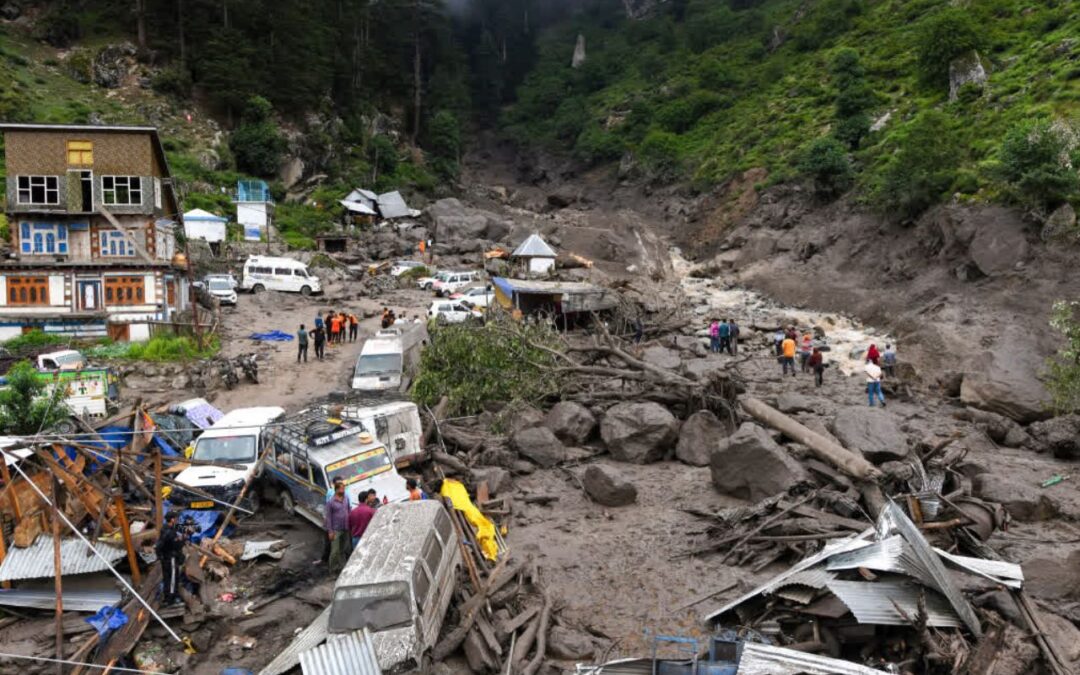Synopsis- Home insurance is meant to protect your home, but here’s the thing—many people in India assume it covers disasters like landslides, earthquakes, or cloudbursts. This article explains what your home insurance really covers and what it doesn’t.
We have been reminded of the vulnerability of our homes to the wrath of nature on several occasions in 2025. Since flash floods buried Uttarakhand hills, to the catastrophic monsoon flooding of Punjab, and even what shook Northeast India, disasters have been coming close to home, literally. However, as the state relief funds intervene to provide a temporary bailout, the long-term question is, will your home insurance plan stand to withstand such shocks?
Recent shocks
Several high-impact events were witnessed in South Asian islands during monsoon and summer: Cloudbursts in Bilaspur, Himachal Pradesh, buried cars, destroyed houses and registered losses of more than ₹4,400 crores and flash floods in Uttarakhand at the start of August, where dozens of people were rendered homeless or went missing, and general floods in Punjab that resulted in a relief package of ₹1,600 crores and a national-level response. In mid-September, a quake of magnitude of around 5.8 earthquake was experienced in parts of Northeast India.
Insurance- What It Covers
- Standard Fire and Special Perils (SFSP)- Typically a building base and contents. It consists of named perils (fire, lightning, explosion, storm/ tempests) and (in most forms) may comprise storm and flood as named perils as long as the product wording adopted by the insurer renders this true.
- Simple house/homeholder policies – encompass fire, theft, burglary, and some accidental damages, and cover some of the living expenses in the meantime, as repairs are being effected. They are not usually accompanied by the presence of an earthquake or a flood.
The fact of the coverage of the floods, cloud bursts, and flash glacial floods.
1. Floods/cloudbursts: Large-scale flooding (rivers, overflow, monsoon inundation), in most cases, is viewed as a special risk by most insurers. Some of the large insurers inform customers that flood cover is not covered by the standard homeowner policy and the SFSP wording contains a clear mention of the word flood or a flood policy/rider. Cloudbursts as it causes flash flooding and debris flows are traditionally checked on the same flood/ flash-flood basis.
2. Glacial lake outburst / flash floods in hilly regions: This is also considered a high severity event related to glaciers, and sometimes it is also taken as a catastrophe event; it is covered differently depending on how the staffing words the product and there are some events left out of coverage which are gradual rather than sudden. Relief and state compensation often fills out the unmet needs in the short term.
3. Earthquakes: In most markets, typical policies of homeowners specifically exclude the earth movement (earthquake, landslide, subsidence). India has earthquake cover and it is most often an add on (endorsement) or a complementary product. where there is a seismic area (NE India, foothills of Himalayas) requiring an earthquake endorsement on loan or other risk-related documents, they will tend to make this a non-negotiable point.
Also read: Top 6 Banks Offering Monthly Interest on Savings Accounts in India – Here’s the List
What To Do When Your Policy Doesn’t Cover
- Get correct purchase rider or SFSP language: Flood /earthquake amend or upgrade the policy, indicating those perils. Examples: request policy wording and search the words of flood, storm, earthquake and landslide.
- Third party schemes/ government schemes: The governments sometimes run relief and subsidised schemes in risky regions; privately funded products are also available concerning floods; compare limits and wait time.
- Mitigation + documentation: Relocate home appliances, fit check valves, record and take photographs of the possessions, and dated photographs and receipts – insurers will need to have evidence and mitigation actions at claims time.
When to take Home Insurance?
You are supposed to take home insurance cover immediately after receiving possession of your finished house or apartment and not when you are constructing one. As long as the building remains under construction, the risk of the insured building against risks such as accidents, structure etc. is normally taken by the builder under a construction specific policy. As soon as you have a legal ownership of the property in which you live or rented out or hold it empty, that is the time you should seek a home insurance cover to cover the property and its contents against any risk of fire, floods, earthquakes or even theft. Most banks will also insist that you purchase insurance at the time of acquisition to the loan in case you have acquired a home loan.
Example coverage for a ₹1 crore home:
| Coverage Type | Typical Insured Value | What It Covers | Notes / Add-ons |
| Building Structure | ₹1,00,00,000 | Walls, roof, floors, permanent fixtures | Covers fire, lightning, explosion, storm; earthquake/flood may require rider |
| Household Contents | ₹10,00,000 – ₹20,00,000 | Furniture, electronics, appliances, clothes, utensils | Limited by policy; requires an itemized declaration for high-value items |
| Jewellery & Valuables | ₹2,00,000 – ₹5,00,000 | Gold, silver, precious stones | Optional; usually requires bills and an item list |
Premium Estimate: ₹6,000–₹15,000 per year (for ₹1 crore structure + ₹15 lakh contents, including standard riders).
Conclusion
The natural shocks are getting stronger; insurance is no magic, it is a transfer of risk and will only work when the risks are explicitly listed on paper. Be a risk manager of your own house: check the wording of your policies, line by line, purchase flood and earthquake endorsements when in a potentially vulnerable area, and maintain an inventory list. It is always better to mend the holes in the coverage before the sky drops down – or the earth moves.
Written By Vijetha Gosi






